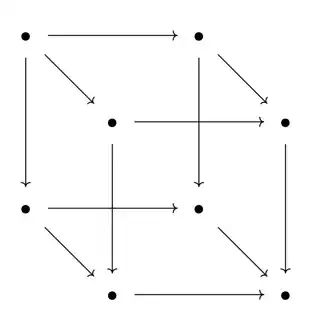When you learn to read and write, you learn that ideas flow on the page from left to right (or right to left, and occasionally from top to bottom, depending on culture). As you start to learn math, you see that it follows the same pattern. An equation like $1+2=3$ reads from left to right (or right to left) and follows the typical form you use to write down anything else. This horizontally-arranged convention follows us into higher mathematics, especially algebra. Multiplication in groups is written horizontally, and there is perennial confusion arising from the difference between right-multiplication and left-multiplication. Exact sequences are arranged horizontally. Etc. Of course not all math is encoded in horizontally-arranged algebraic expressions, but that is certainly a bedrock for a lot of knowledge.
I'm curious if there is any body of thought that examines how our mathematics is shaped or constrained by our conventions for arranging ideas horizontally on a page. Maybe there are even constraints just based on the fact that we're writing things on a page at all! And perhaps this is a case of "you can't know what you don't know". But it would be interesting to collect examples from the history of math when breaking away from these conventions of thinking led to big advances.
